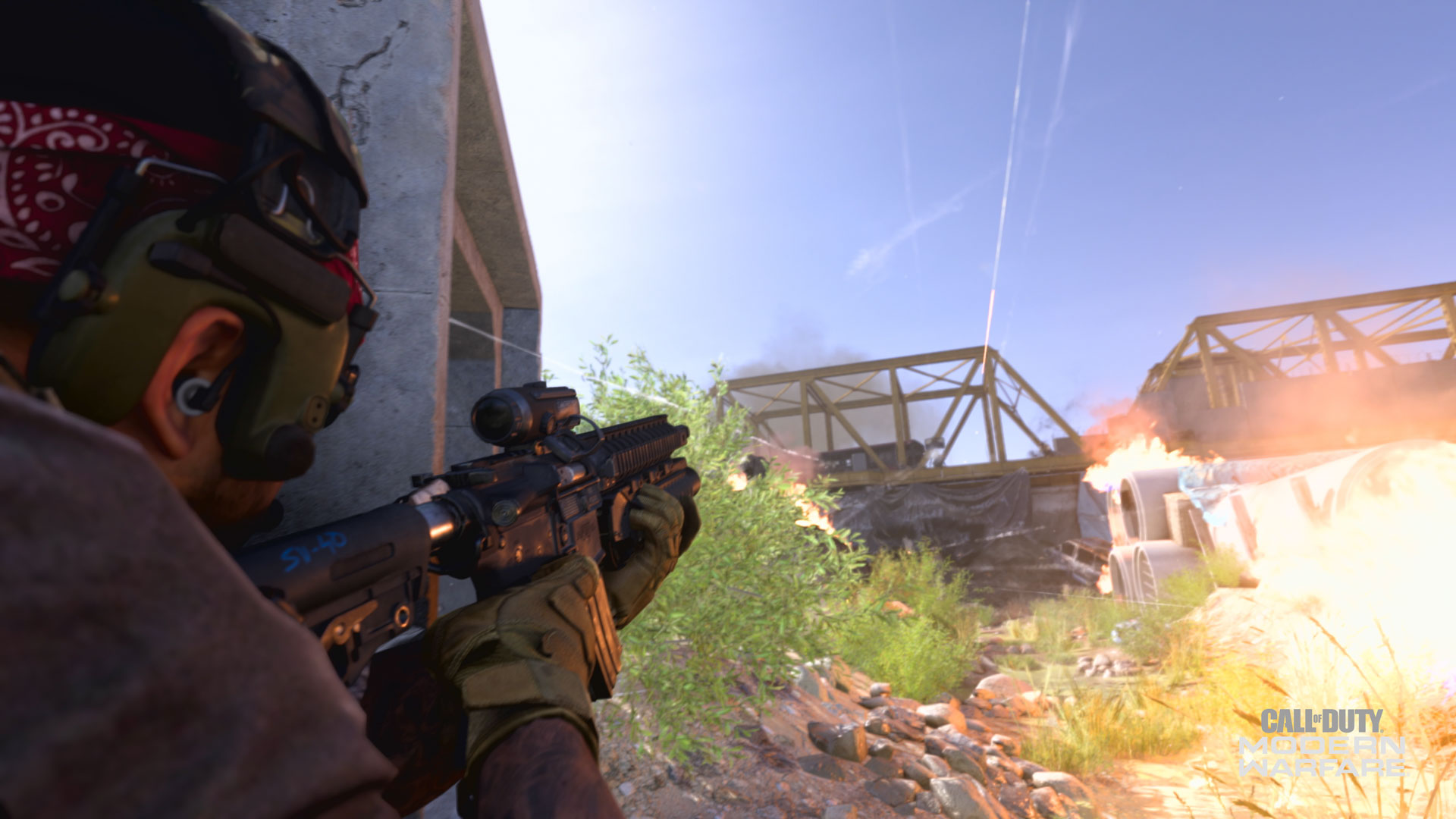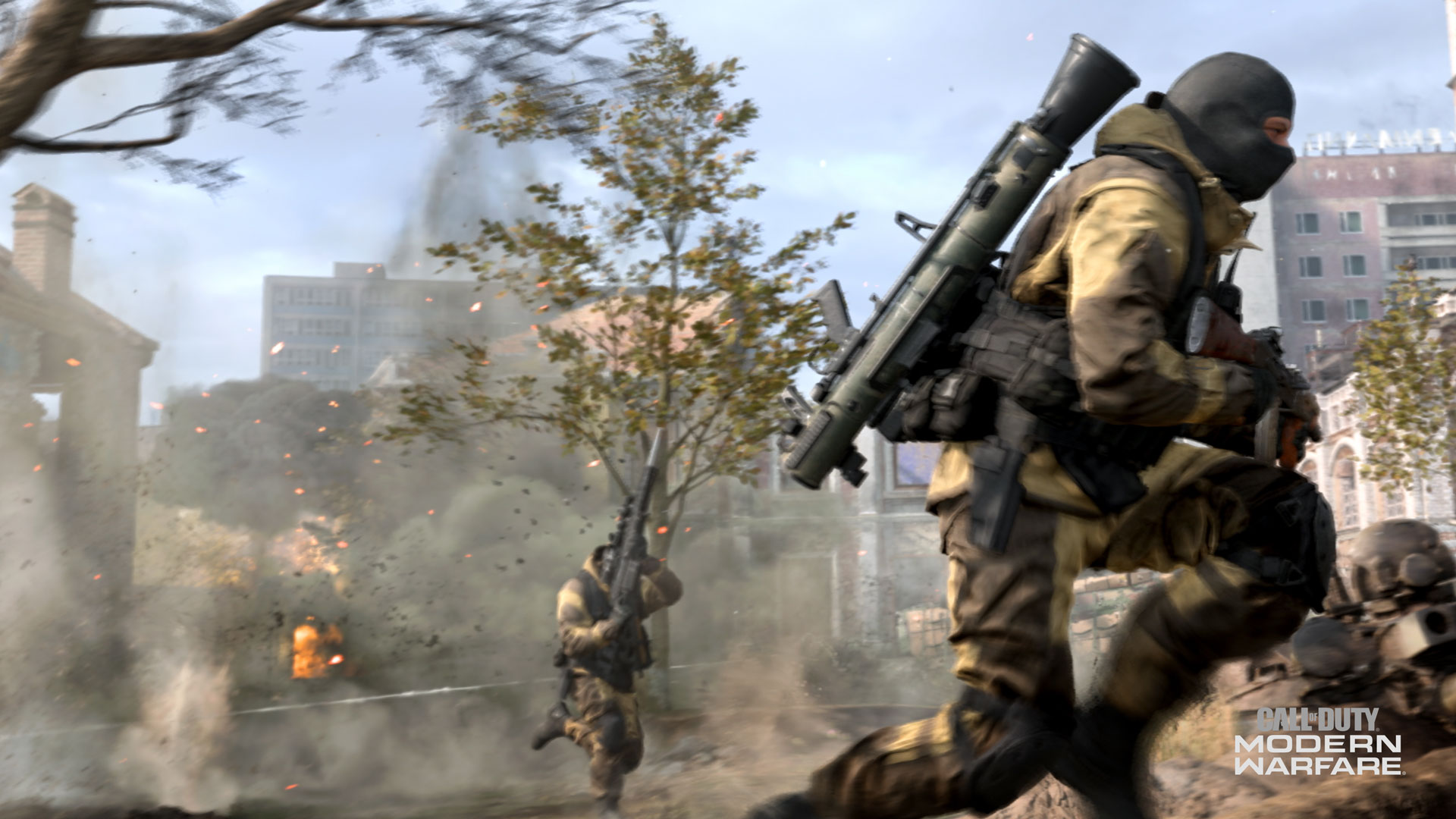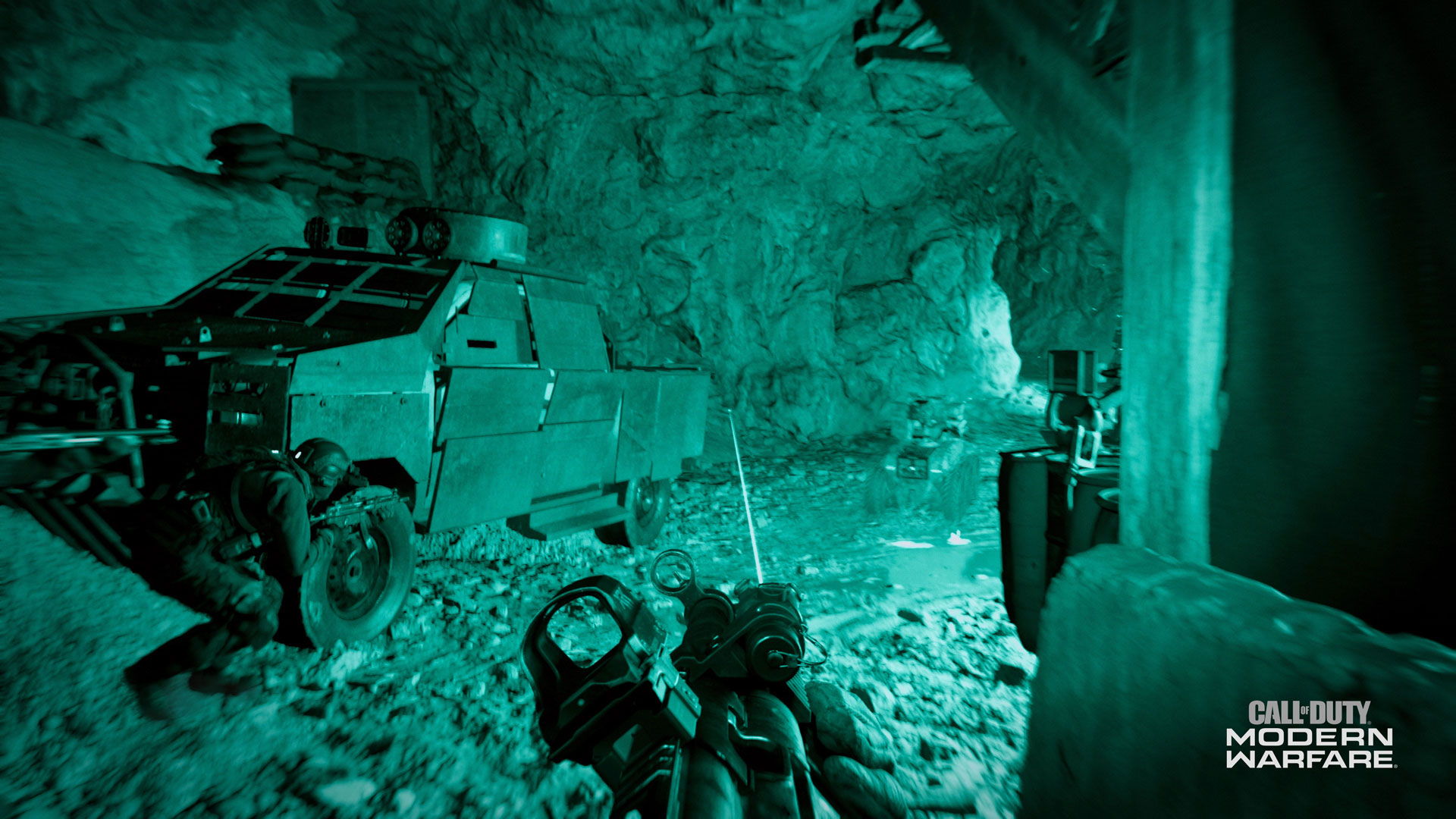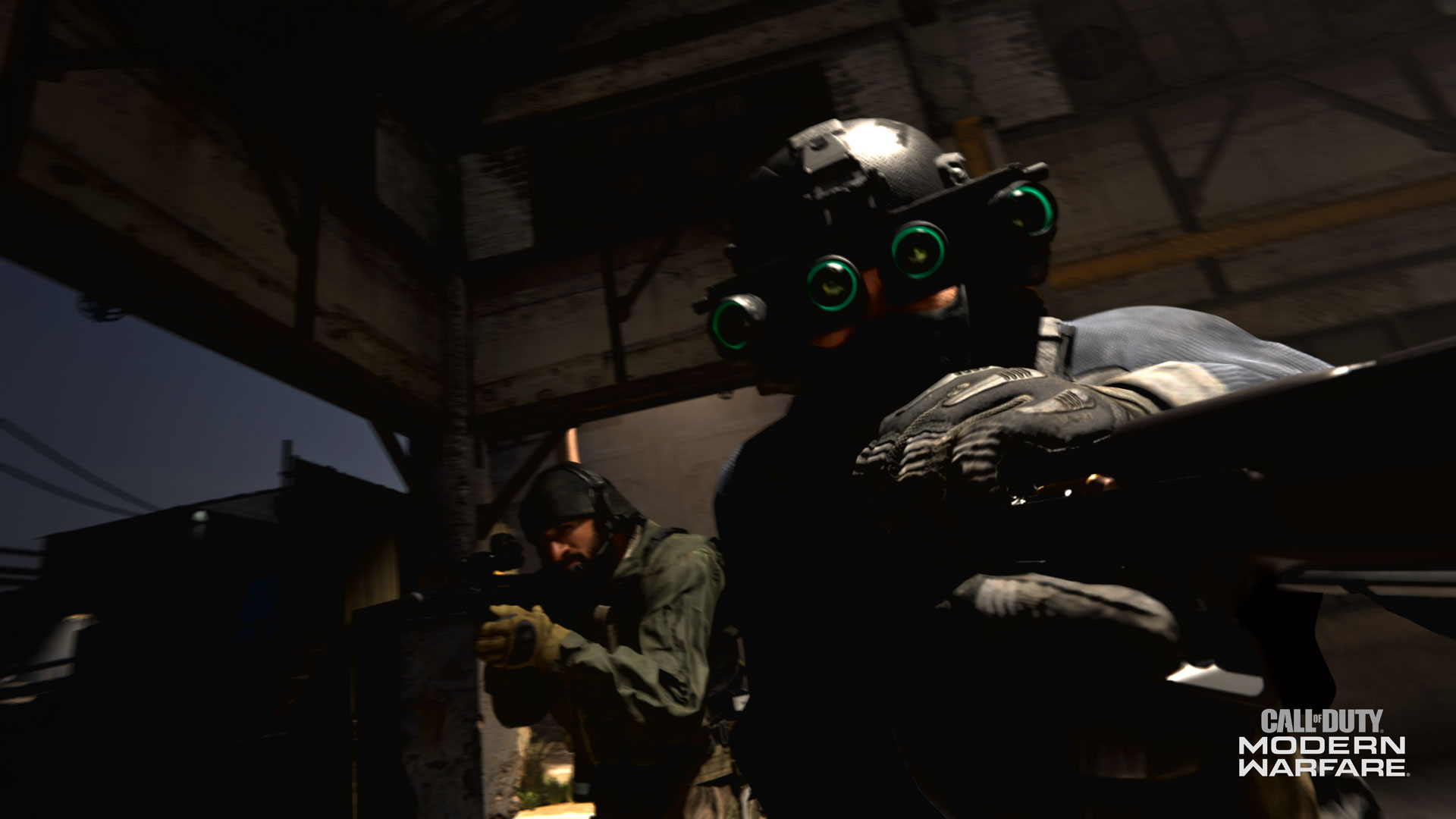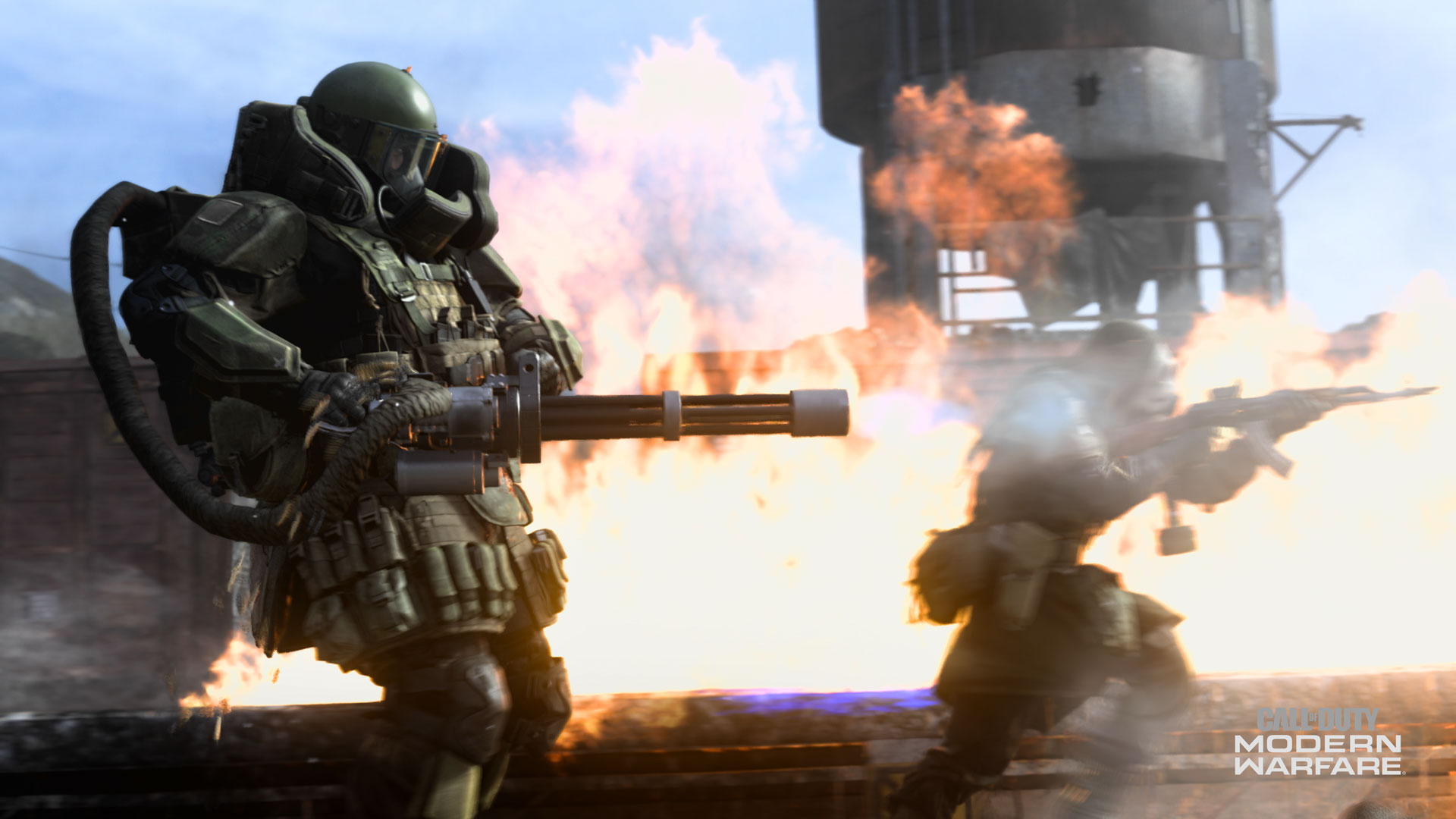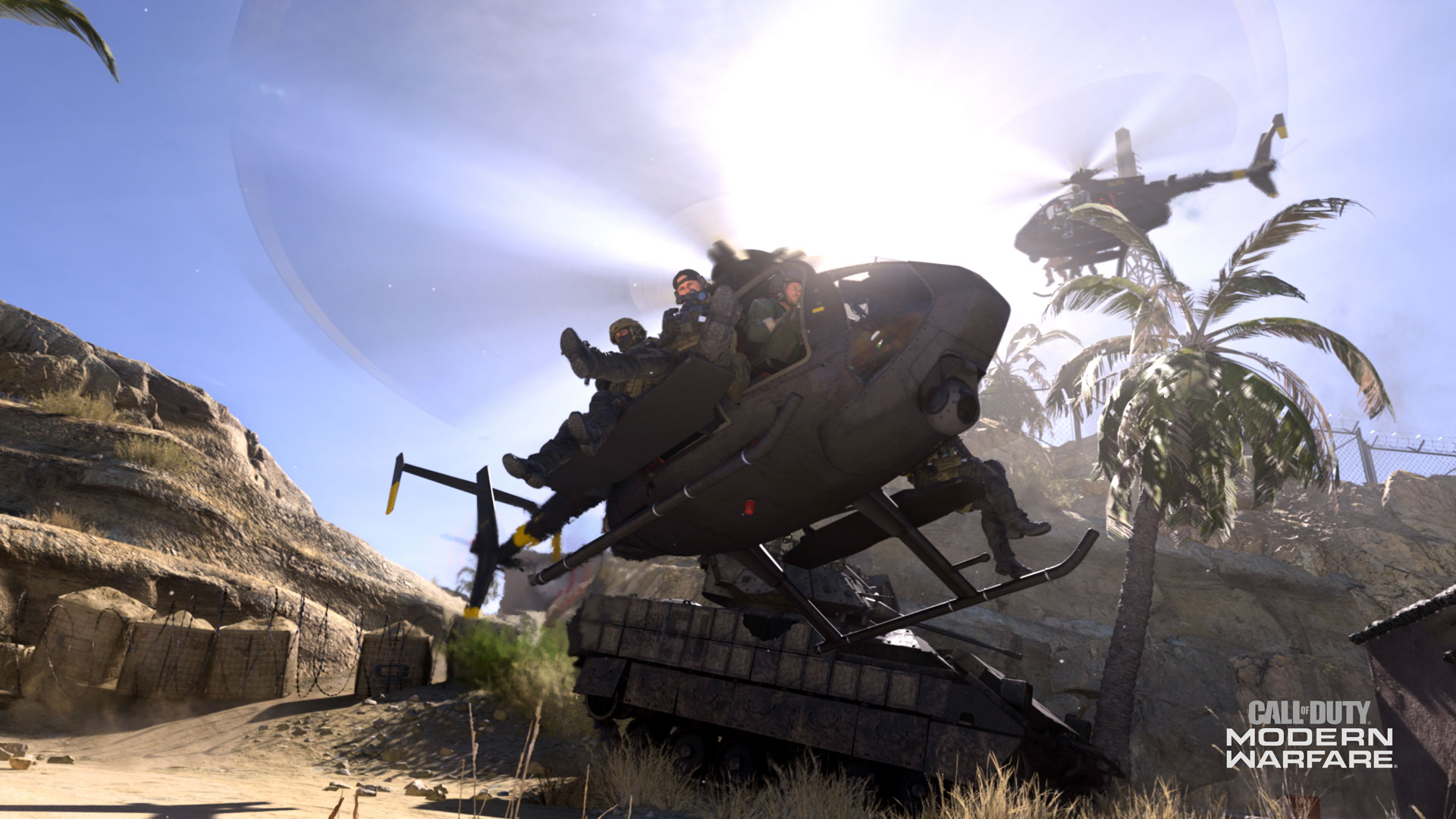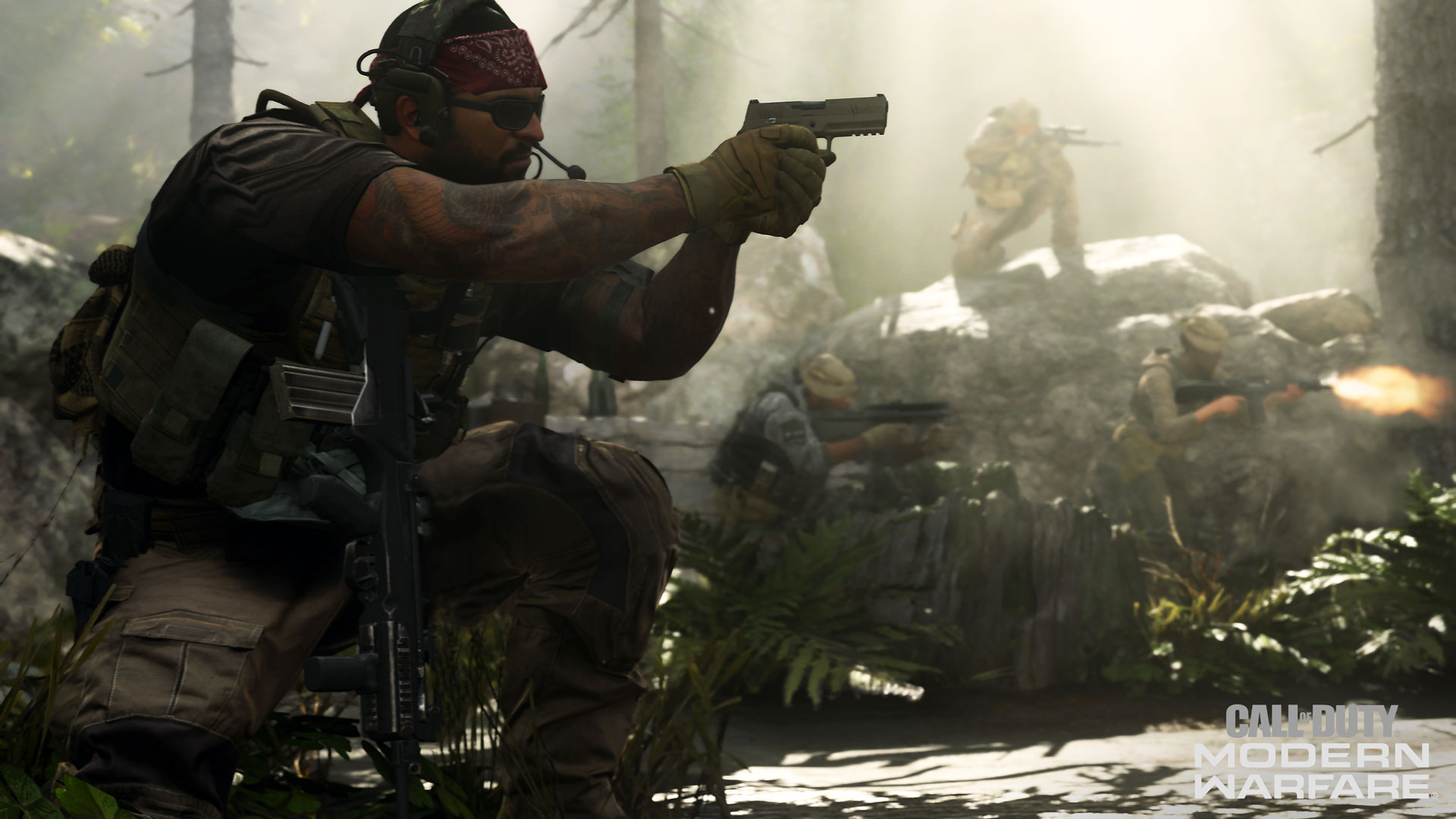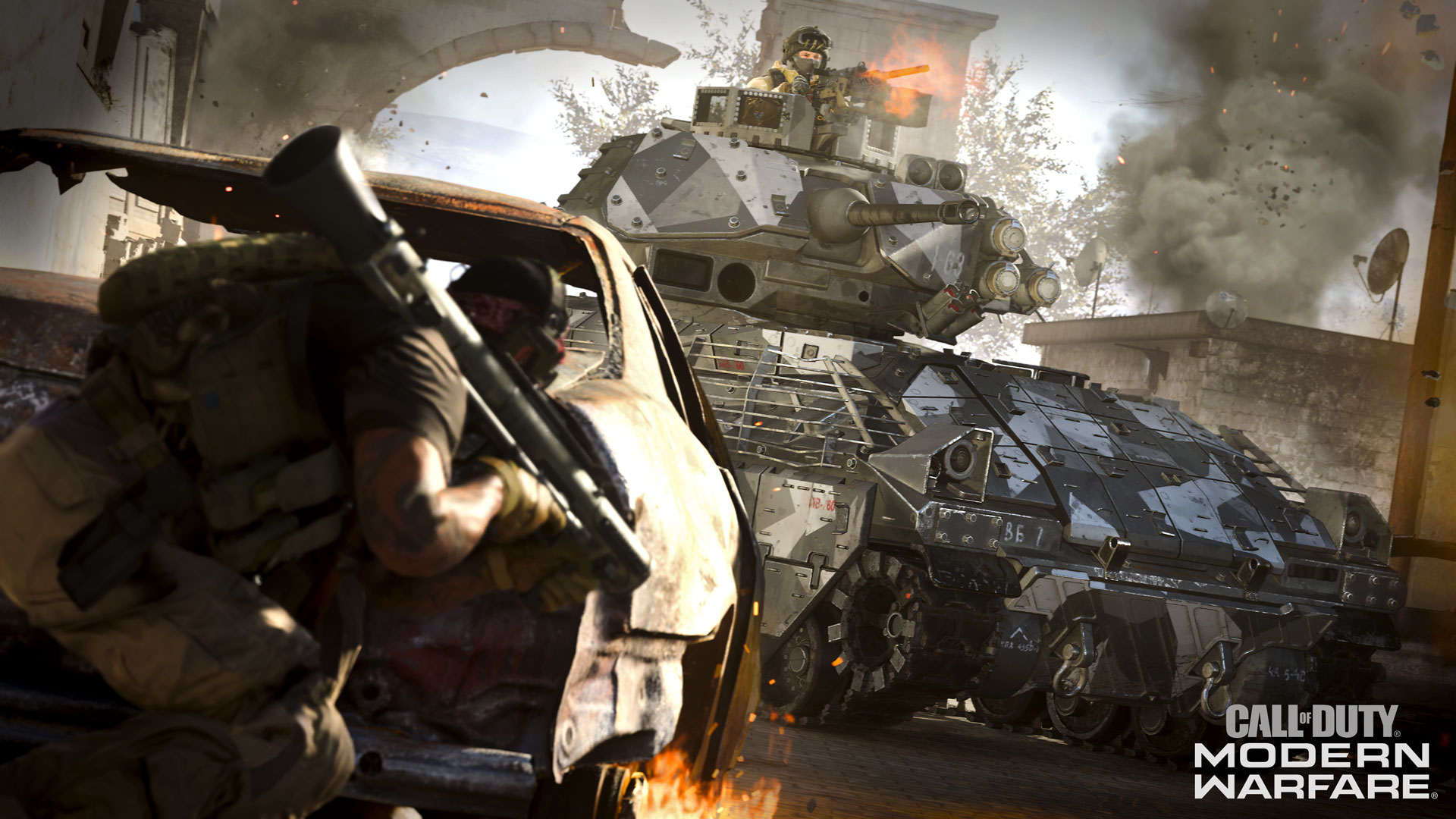Part 1: Creating the Multiplayer Maps
The Multiplayer Mantra: Strategy and Tactics
When Infinity Ward’s Multiplayer team set about designing the multiplayer mode of Modern Warfare more than three years ago, it was time for a change. As Multiplayer Design Director Geoff Smith began to work on the basic tenets of what would become the multiplayer experience, there were weeks of discussions and initial pondering, until it was agreed that a reimagining would extend not only to the Campaign, but to all facets of this Modern Warfare : “There’s a lot of fans of the original Modern Warfare , and there’s a lot of new fans too… so what do you make? Fast speed? Unlimited sprint? No sprint? All these different things – how do you go, what do you do? We decided to strip everything down and really do the due diligence. We questioned every feature.”
“While we were going through the process, we came up with some mantras and processes that helped us navigate, inspire us, and give us ideas to create new elements. One of those was ‘strategy and tactics’ – for us, it boiled down to trying to make the game approachable and playable for different playstyles. We felt we should expand the focus beyond precision-aiming and allow for other playstyles.”
One of the biggest changes was in terms of map design. Says Geoff; “if you take a horizontal plane, and you give everybody the exact same weapon, who wins? What skill wins? It’s really the player that has the better aim.” It was time to even the playing field (and the battlefield) just a little: “In our previous games, we would have these power positions, and those got boiled out of the game due to concerns about ‘head-glitching’ or camping. But that was the kind of special sauce that made Team Deathmatch work so well; that you have a power position and you actually have an advantage by having a line of sight and people would gravitate toward you.” In a general sense, the new Modern Warfare maps are more about these power positions, as well as “the ebb and flow between them, and digging into the negative space between them, and being [in] a realistic setting.”
Massive Depth and Military Roots
The realism, as well as consistency across all the different parts of the game extends to the way in which the team creates the majority of its multiplayer environments. “You can’t build a symmetrical environment and make it real,” Geoff explains, “humans pick up patterns really quickly – so we focused on making the layouts of the maps more believable. That was the starting point. We wanted the player to have more strategies than just ‘who can shoot each other more accurately and more quickly’.” With Modern Warfare , expect multiplayer maps to be comprised of a lot more freestanding buildings, many with upper floors, tiers, and doors.”
As the Art teams began the painstaking process of taking the photogrammetry data and placing in believable environments, Infinity Ward’s Design team went to work, explains Geoff. “We’re getting back to the roots of a military action title. Seeking inspiration, the team took a look at real-world combat, and how different the battles could be: Geoff tells us that “Marines taking back a desert city plays out very differently than a special forces team taking down an oil rig.” The team used that as inspiration to add different maps of different sizes, but also the equipment used in these different situations too. The results? “It yields a game that has massive depth. We have stuff that’s really small; custom little maps. We have a little bit bigger core maps, bigger still medium-sized maps, and then we have some really large-scale maps – bigger by an order of magnitude.”
Taking Grandma’s Plastic Wrap off the Furniture
Maps also have a larger degree of interactivity than ever before: “In terms of maps, we’ve taken Grandma’s plastic wrap off the furniture: By this, I mean in our last few games, you’ve not been able to climb up many [parts of the environment].” And now? “You can climb, mantle, and explore all over the place, and that’s part of the ‘strategy and tactics’ mantra. It adds another layer of problem-solving to a firefight. We want people to find a new spot that you haven’t found yet, it just adds to the fun.” Take climbing for example:
“A lot of the map design historically was three-lanes, where if you were fighting down a hallway, it’s not very easy. But now you’re able to able to climb up boxes, climb through windows, flank enemies in different ways. We tried to approach this more creatively.” This was due to the second mantra; making the Multiplayer experience fun and approachable: “Though we want to make the game as authentic as we can, we also want to keep that arcadey, buttery feel to the gameplay – it has to fun.” Finding that balance was the key to success. But that doesn’t mean there weren’t a few teething troubles:
Tactical Artistry: Making Entertaining Maps
“When we started, there were folks who were uneasy about, what felt like, open-field combat. We had one Designer who was really used to playing past Call of Duty games, and he was worried about an area in a particular map; ‘there’s no cover here, how do I deal with a guy in the distance?’ He’d never had to deal with closing distances.” The initial plan, as well as adding a variety of cover options, was to throw a smoke grenade to provide cover as you advance.
“So he threw it, but by the time it took him to advance to the next piece of cover, the smoke had disappeared.” This was subsequently fixed and now “smoke usually remains long enough so your Sprint speed can get you to the next piece of cover.” This was one of many tests and learning exercises that the Multiplayer team ran. The end result? “All our environments are built around certain solvable problems, and that’s the life-blood of making the maps entertaining.” Maps aren’t simply a set of different objects scattered around the play space; true tactical artistry is involved. This even extends to the larger environments, too. “We stick to those standards, and problem-solve whatever that gameplay detriment is. It’s interesting to see that after two years of testing, how this has evolved.
Join us tomorrow for Part 2, where we detail a variety of innovative gameplay mechanics that elevate the fight.
Part 2: Gameplay Mechanics that Elevate the Fight
Modern Warfare features a series of new gameplay mechanics: Bullet penetration, where the higher the caliber of your weapon, the further it pierces through various sections of scenery. Breaching doors. Mounting weapons. The Tactical Sprint. Multiplayer Design Directors Geoff Smith and Joe Cecot help explain some key examples, beginning with Breaching.
Breaching: Dynamic Doors
“We put usable doors in, initially as a lark, but it quickly added a lot of dynamics to the matches,” says Geoff: “There are four ways to interact with a door. Explosives and concussions will pop a door open. You can walk up and press the Use button. You can Sprint through it [making yourself heard as the door smashes or clangs open]. Or you can walk up while in ADS and press Use, and the door opens up just a little bit; that’s silent so it’s a stealth approach. Then you can physically push into the door and open it. That’s fun for throwing in Flashbangs. You can cook a grenade, throw it at the base of a door, free aim at the door and it opens for you, after which the grenade explodes.”
Joe Cecot explains further: “Using doors strategically actually helps you pause a firefight. “You can go into a room, close the door, and the dilemma for the guy who was targeting you is ‘do I bust through the door; he’s probably just waiting for me on the other side of the door, or do I try to find another way; climb up a dumpster, up into a window and get at him in a different way’. It’s moments like this which adds a lot more depth and fun.”
Pieing and Pivoting: Mounting your Weapon
Another new aspect to Multiplayer battles is Mounting. Geoff gives us a quick run-down: “Gun mounting is a contextual technique in ADS. We talked to [military consultants] and asked them how they went through and cleared a house, and asked if they posted up, and they said they’d take whatever stability they could get.” The Infinity Ward team “worked on the new Mount system that works both vertically and horizontally. It really allows you to ‘pie’ a room.” You can go up to a door frame, and “you don’t so much as lean around a corner, as rest your hand on the edge and can use that now as a pivot point.”
You can simply move to release the mount, but while your weapon rests on a mounting point, “it really helps dissipate some of the recoil you have.” Joe adds: “If you think about being in first-person, it’s really hard to tell where your character is, and if you’re standing at a door you can’t really tell how exposed you are. But this allows you to know you’re only exposed a little bit. This also allows us as developers to push the player mounting his cover out enough, to expose the silhouette [slightly], so that there’s gameplay there.” Of course, you don’t have to use it. You can still run and gun.
More Haste, More Speed: The Tactical Sprint
There are now more ways to move forwards at speed than ever before. As well as prone shuffling, crouching, creeping, walking, running, and a sprint where you move more quickly while carrying your weapon in a firing position, the team has introduced the Tactical Sprint. Geoff calls it “a burst of extra sprint; the weapon comes up, and is positioned differently compared to the aim, when you’re moving fast and traversing scenery.” The normal sprint feels good, but this is even better, especially when combined with other techniques: “combat sprint into mounting on vertical planes makes you feel like you’re playing in a different way.”
Night Vision: Half-ADS, All Tactical
Principal Rendering Engineer, Michal Drobot and his team spent a considerable amount of time getting Night Vision to look correct in the Campaign (as this Blog post attests), and this spurred interest in utilizing it in Multiplayer. Geoff remembers Night Vision back in the original Call of Duty® 4 , “but it was a screen overlay, and this time it is true night vision, so we started to go crazy, and made completely black maps. We playtested them, fine-tuned them, and after a while we came to a middle ground where we positioned lights along hallways and at doorways, and you can turn on or off lights in some cases, which leads to cat-and-mouse confrontations. You can turn on lights to blow out your [opponents’] NVGs, and there are other things we’re working out at the moment, but there are several maps that are ‘dark’ versions.”
“We learned from [our military consultants] that you can’t cheek your rifle with these big goggles on, so we implemented a half ADS, but because your enemies also have goggles on, they will see your laser sight.” This leads to many players taking a minute to choose when they want to ADS. “It feels like you won’t be accurate when you’re shooting like this, but you will be. It creates gameplay where you don’t want to ADS too much. You have to use it really tactically.” Joe recommends you “learn the maps in the daytime, ready to go dark.”
Realism: Senses Working Overtime
Whether you’re playing a Day or Night map variant, those seeking a bigger challenge and a further boost of adrenaline, might want to try Modern Warfare’s Realism option. Geoff describes it as having “minimal HUD. You have to see or hear the enemy drop to figure out whether you’ve taken them down.” Joe adds that it has “a horror movie” vibe and feel to it.
Killstreaks: Owning the Opposition and Reaping the Rewards
The fine art of Killstreaks – living long enough and downing enough opponents to call in an impressive and bombastic reinforcement or other military support – returns with a vengeance in Modern Warfare . “We wanted to bring back the fan favorites, but also not rest on our laurels,” Geoff says. “We wanted more defined Killstreaks, with some basis in reality. This includes bringing a drivable vehicle into the game [the Infantry Assault Vehicle], with a second access point [turret] that another player can hop onto. There was also design direction away from simply pulling up a mini-map and calling ordnance on any space in the game world. That gives you too much range. In this game, if you pull up the binoculars, you have to get line of sight; you have to get to a good vantage point to call in a particular Killstreak for it to be effective.” The team strove for balance, likening a Killstreak to a “boss fight”, with all parties being entertained; even those on the receiving end.
But what about Scorestreaks? Says Geoff; “We have some familiar ones and we’re bringing in some new ones. We felt that in some games, Scorestreaks tend sometimes not to be clear; ‘if you’re in this mode a Scorestreak is 50 points, but if you’re in another mode, that same Scorestreak is 100 points’.” This led to players disengaging. Compare that to the Killstreaks of previous Modern Warfare games: “You knew that when you had four kills, you were one away from a Predator missile, and your heart starts pounding, and you’re nervous, and we felt that had gone away to some extent, so we went back to Killstreaks.” But Scorestreaks haven’t been forgotten about completely: “We do have a Perk called Point Man, that lets you go back to Scorestreaks if you want, if you like this playstyle. You can also opt out of Killstreaks, and use Perks in a Specialist system – we are peppering in little elements there for those that want them.”
Infils (Infiltrations): Cinematic, not Spawning
As previously demonstrated in our Teaser post, the team at Infinity Ward wanted to make multiplayer a little bit more cinematic. “We put a lot of work into the infil at the start of each MP match. You can see teammates flying in on Little Birds [helicopters], or coming in on the back of a truck, or van… for each map we have these different infils to set the tone; we’re rolling in, we’re ready to go, versus just sitting there and waiting.” This sets the believability level of the action to come, as “these are soldiers going into a fight; they’re not just spawning there…”
Finishing Attacks: A Knife for your Life
One of the smaller, occasional, and always entertaining aspects of multiplayer games are Execution moves. Geoff explains these finishing attacks: “If you run up behind somebody and you press the Melee button, you’ll take them out. But if you hold Melee, you’ll complete an Execution, whether they are standing, crouched, or prone. It’s a fun little show-off move.” It’s also worth noting that each Operator has their own specific attack, too.
Recoil: Modifying and Managing your Gun’s Momentum
When a gun whips back after firing a shot, you have a brief second to wrangle the weapon sights back onto a target and shoot again. In Modern Warfare , weapon recoil is treated as realistically as possible, while giving the weapon practitioner as much control as possible. Geoff takes up the explanation: “Recoil will have different patterns, and you can counter recoil using your thumbstick. But when you release the thumbstick, in the past you may [have ended] up looking at the ground.” To combat this, Infinity Ward implemented an interesting little trick: “We negated that thumbstick offset, so recoil is far less annoying. However, different guns have different recoil patterns to learn and offset.” Joe confirms: “All of our recoil is a learnable pattern.”
With authentic and realistic gun mechanics and the most weapon choices in Call of Duty history, join us tomorrow for Part 3, where we dive deeper into the best-in-class “down the barrel” gameplay from Infinity Ward.





